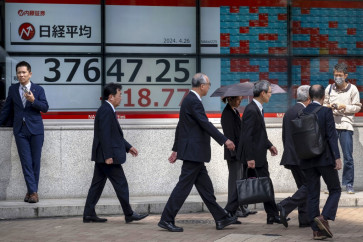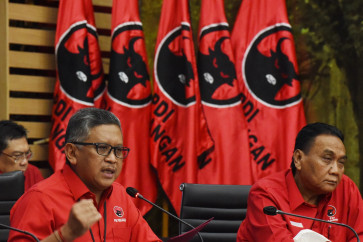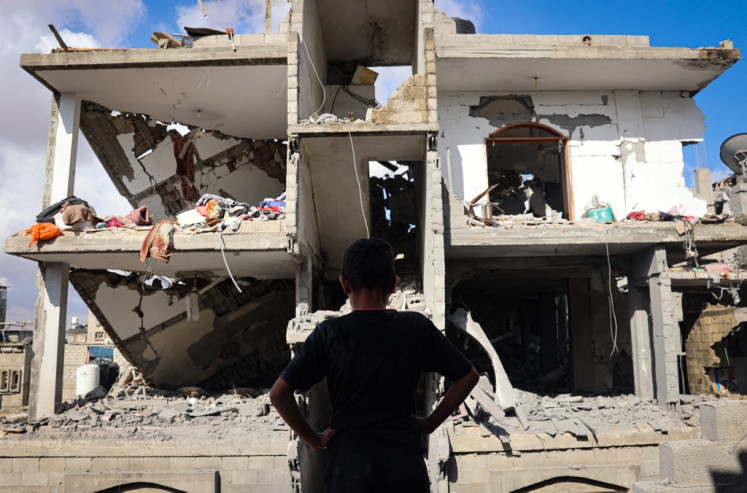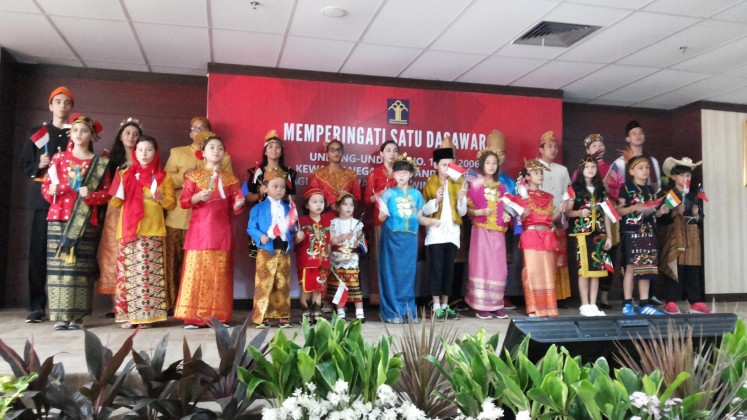The maestro's diaries
The exhibition of works and memorabilia of S. Sudjojono serves as journal of his life, reeling out his honest approach to art, his fearless stand in supporting the country’s freedom and his struggle to uphold nothing but the truth.
Change Size
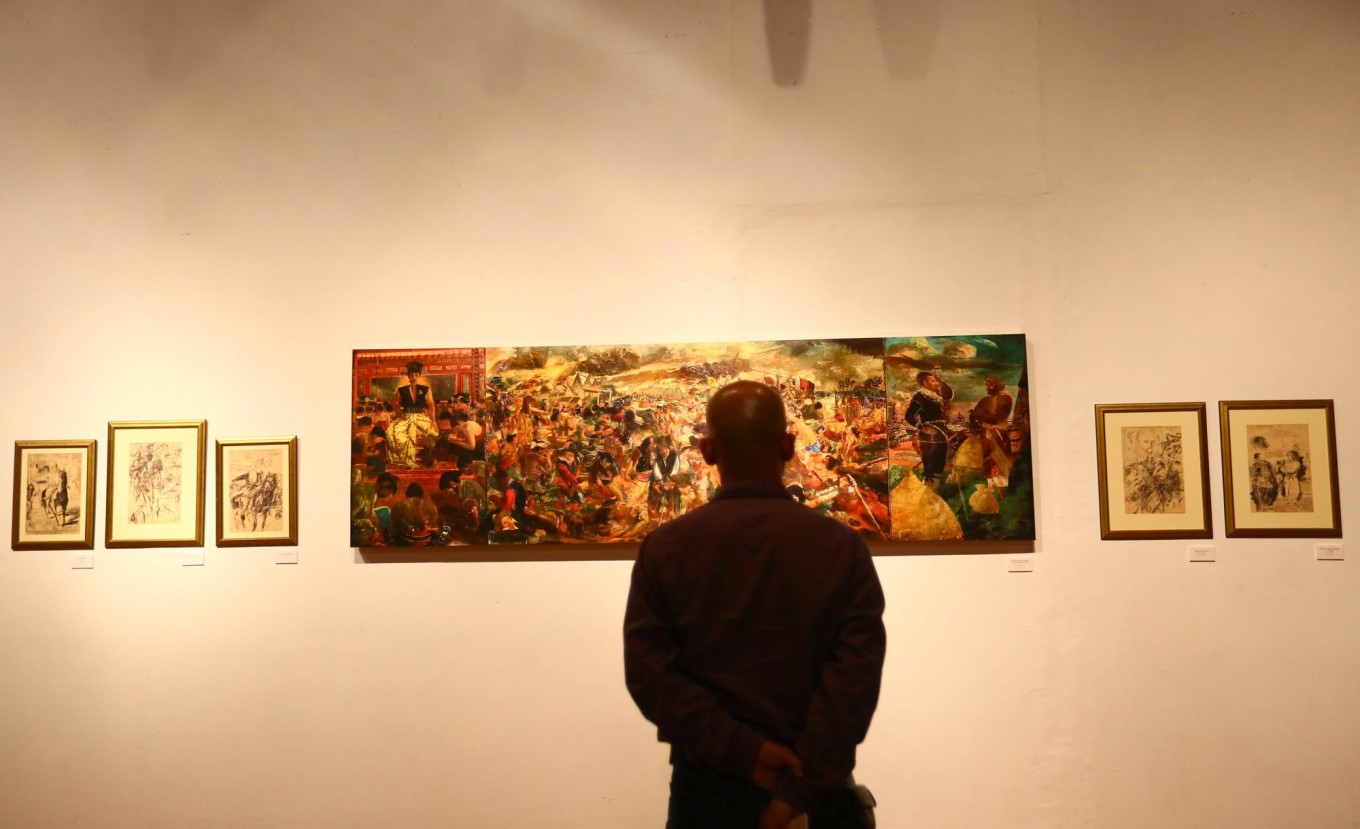 A visitor look at one of Sudjojono works at Sudjojono's sketch painting exhibition at Bentara Budaya, Jakarta on Tuesday, June 6. 2017. (JP/Wienda Parwitasari)
A visitor look at one of Sudjojono works at Sudjojono's sketch painting exhibition at Bentara Budaya, Jakarta on Tuesday, June 6. 2017. (JP/Wienda Parwitasari)
T
he life principles of this versatile artist, dubbed the “Maestro of Indonesian Modern Art,” manifest in his sketches, paintings and writings currently on display at the Bentara Budaya Jakarta cultural institution in Palmerah, Central Jakarta.
Titled Hidup Mengalun Dendang (Life is a Flowing Song), the exhibition shows Sudjojono’s train of thought and sketching regimen before producing a painting masterpiece, or the blueprint of a statue or monument.
Among 130 sketches he made with pencil, ballpoint pen, Chinese ink and watercolor paints, there are some frames of his attempt to draw the proper sitting posture and facial expression of Sultan Agung of the Mataram Kingdom.
The end result was the three-paneled The Battle of Sultan Agung and Jan Pieterszoon Coen on a 3-meter by 10-meter canvas. The original painting, a request made by Jakarta governor Ali Sadikin in 1973, is kept in the Jakarta History Museum in West Jakarta, but visitors can see the replica at the exhibition.
Read also: Late maestro S. Sudjojono’s sketches, memorabilia showcased in Jakarta
“Pak Djon spent three months in the Netherlands for intensive research on the event and the costumes, and another eight months to finish the painting. He got the canvas made-to-order in Belgium, and bought the brushes and paints in the Netherlands,” Bentara Budaya curator Ipong Purnama Sidhi said at the exhibition’s opening event on Tuesday.
Organized by Bentara Budaya Jakarta and the S. Sudjojono Center, other curators involved in the exhibition are Daniel Komala and Siont Teja.
The opening event was attended by Sudjojono’s wife Rose Pandanwangi and S Sudjojono Center board member and co-founder of The Jakarta Post, Jusuf Wanandi, among others.
Rose, 87, is known as a classical mezzo-soprano singer who won 12 radio singing competitions and traveled the globe to perform. At the opening ceremony, she belted out the songs that marked her career, in between theatrical poetry readings by Gandung Bondowoso.
The exhibition’s title was taken from Rose’s opera group, whose name was coined by Sudjojono. The artist passed away on April 25, 1985, and was survived by three daughters from his marriage with Rose. From a previous marriage with Mia Bustam, Sudjojono had eight children.
The team divided the exhibit’s 130 sketches into 15 categories that included portraits of his family, his take on building facades in architecture, flowers, animals, self-portraits, portraits of the people in his circle, as well as landscapes — all of which bear detailed information about the piece or even Sudjojono’s handwritten comments.
Read also: Purwakanthi seeks to preserve classic Surakartan Javanese dances in Jakarta
Besides the sketches, six authentic paintings and four replicas are on display to mark Sudjojono’s journey shifting from realism to expressionism.
For Sudjojono, sketches were the most important element of fine art as he believed they could convey how skillful a painter was.
“Colors can be deceitful. An artist can deceive the beholders of his art with the theme of the painting. [But] people can’t lie in sketches; they can’t do anything [with it] except be honest,” he once said as quoted by Bentara Budaya program director Frans Sartono in the latter’s remarks in the exhibition’s catalog.
Sudjojono also gained respect for his nationalism in finding Indonesian own style of painting and his efforts to deliver messages of nationalism through his work. A prominent example is his 1979 painting titled Our Soldiers Led under Prince Diponegoro, which depicts the ferocious character of the Javanese prince in battlefield, and his response to Raden Saleh’s 1857 painting titled The Arrest of Pangeran Diponegoro, which shows the defeated freedom fighter.
Art critic Trisno Sumardjo was the first to label Sudjojono as the Maestro of Indonesian Modern Art in 1949.
“Sudjojono was a multitalented and multidimensional artist, […] not only a sketch artist, painter and a sculptor. He also immortalized his thoughts in writing, which is rarely done by an artist in his day,” curator Ipong said.
“He has become the inspiration and role model for artists of later generations.”
__________________________________
Hidup Mengalun Déndang
Sketches, paintings and memorabilia exhibition of S. Sudjojono
Date: June 7 to 13, 2017
Venue: Bentara Budaya Jakarta
Jl. Palmerah Selatan, Central Jakarta


